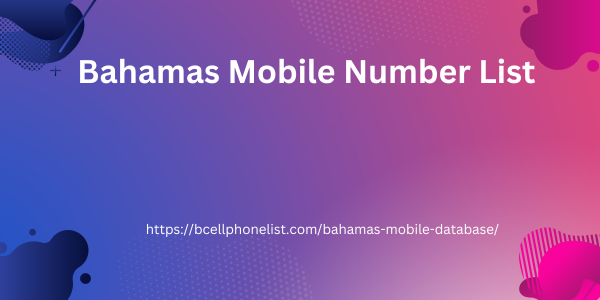Post by account_disabled on Mar 10, 2024 22:34:50 GMT -5
Bridging talent gaps is crucial for companies to remain competitive, productive and profitable. Conducting a skills gap analysis gives you visibility into your workforce, keeps you up to date with changes in the environment, and helps you guide your recruiting efforts. Now, let's dive into the top eight reasons why you should conduct a skills gap analysis at your company. 1. Keep up to date with the advancement of technology Technology is changing at an unprecedented pace, and jobs are changing because of it. Artificial intelligence is rapidly entering companies. It is not "filling" as many jobs as people expected, but it is changing the responsibilities of many positions. According to a study, 63% of jobs will be complemented by AI , 7% will be replaced and only 30% will be unaffected. Since few employees will be unaffected, companies must uncover these talent gaps and then train and upskill their employees if they want to stay competitive. Those that do not adapt risk being displaced by the companies that invested in their workforce. Another way to prepare for the future of work is by hiring based on potential. It's about finding employees who possess potential, such as adaptability and curiosity , which is key to creating an agile workforce that is prepared for whatever the future brings.
For more information on this topic, read our blog article on how to stay ahead as the world changes . 2. Mitigate the talent shortage Hiring the right people is not easy: up to 77% of companies have difficulty filling Bahamas Mobile Number List vacant positions. A skills gap analysis shows you exactly what you need for your workforce, which is crucial during a skills shortage because: You can focus on finding the necessary skills instead of spending time and effort searching for candidates who might lack key skills. You can train and upskill your current workforce instead of hiring externally. Skills gap assessments allow you to fill gaps efficiently, reducing hiring effort and costs when talent is scarce. Additionally, finding hidden talent that is already in your workforce is efficient and economical. Fosters a culture of internal mobility , which increases employee retention. 3. Better strategic workforce planning Conducting an employee skills gap analysis gives you an overview of their current skills, helping you anticipate and plan for future organizational needs. Strategic workforce planning helps you understand the capacity of your workforce and improve your succession planning efforts, leading to better business results.

For example, you might discover that your company lacks key graphic design skills, but not enough to hire two in-house professionals. Your skills gap analysis might show that you could effectively fill those gaps with a traditional employee and a contractor. This plan is essential for the future of your company, helping you hire more effectively and successfully leverage your current staff. 4. Improved learning and development Analyzing skills gaps allows you to focus your development initiatives, aligning them with your business objectives and helping employees learn relevant skills. This not only helps your employees develop more effectively, but also improves the culture of professional growth and empowers you to build better learning strategies. Better learning and development strategies are essential as an employee retention strategy , because today it is an expectation. They also help attract new talent. One study found that 48% of workers would change jobs if offered development opportunities, and 65% consider employer-provided training important when evaluating a potential job.Better visibility of your workforce Knowing what's happening in your workforce helps you make better decisions, like who to train and what project needs new team members.
For more information on this topic, read our blog article on how to stay ahead as the world changes . 2. Mitigate the talent shortage Hiring the right people is not easy: up to 77% of companies have difficulty filling Bahamas Mobile Number List vacant positions. A skills gap analysis shows you exactly what you need for your workforce, which is crucial during a skills shortage because: You can focus on finding the necessary skills instead of spending time and effort searching for candidates who might lack key skills. You can train and upskill your current workforce instead of hiring externally. Skills gap assessments allow you to fill gaps efficiently, reducing hiring effort and costs when talent is scarce. Additionally, finding hidden talent that is already in your workforce is efficient and economical. Fosters a culture of internal mobility , which increases employee retention. 3. Better strategic workforce planning Conducting an employee skills gap analysis gives you an overview of their current skills, helping you anticipate and plan for future organizational needs. Strategic workforce planning helps you understand the capacity of your workforce and improve your succession planning efforts, leading to better business results.

For example, you might discover that your company lacks key graphic design skills, but not enough to hire two in-house professionals. Your skills gap analysis might show that you could effectively fill those gaps with a traditional employee and a contractor. This plan is essential for the future of your company, helping you hire more effectively and successfully leverage your current staff. 4. Improved learning and development Analyzing skills gaps allows you to focus your development initiatives, aligning them with your business objectives and helping employees learn relevant skills. This not only helps your employees develop more effectively, but also improves the culture of professional growth and empowers you to build better learning strategies. Better learning and development strategies are essential as an employee retention strategy , because today it is an expectation. They also help attract new talent. One study found that 48% of workers would change jobs if offered development opportunities, and 65% consider employer-provided training important when evaluating a potential job.Better visibility of your workforce Knowing what's happening in your workforce helps you make better decisions, like who to train and what project needs new team members.
